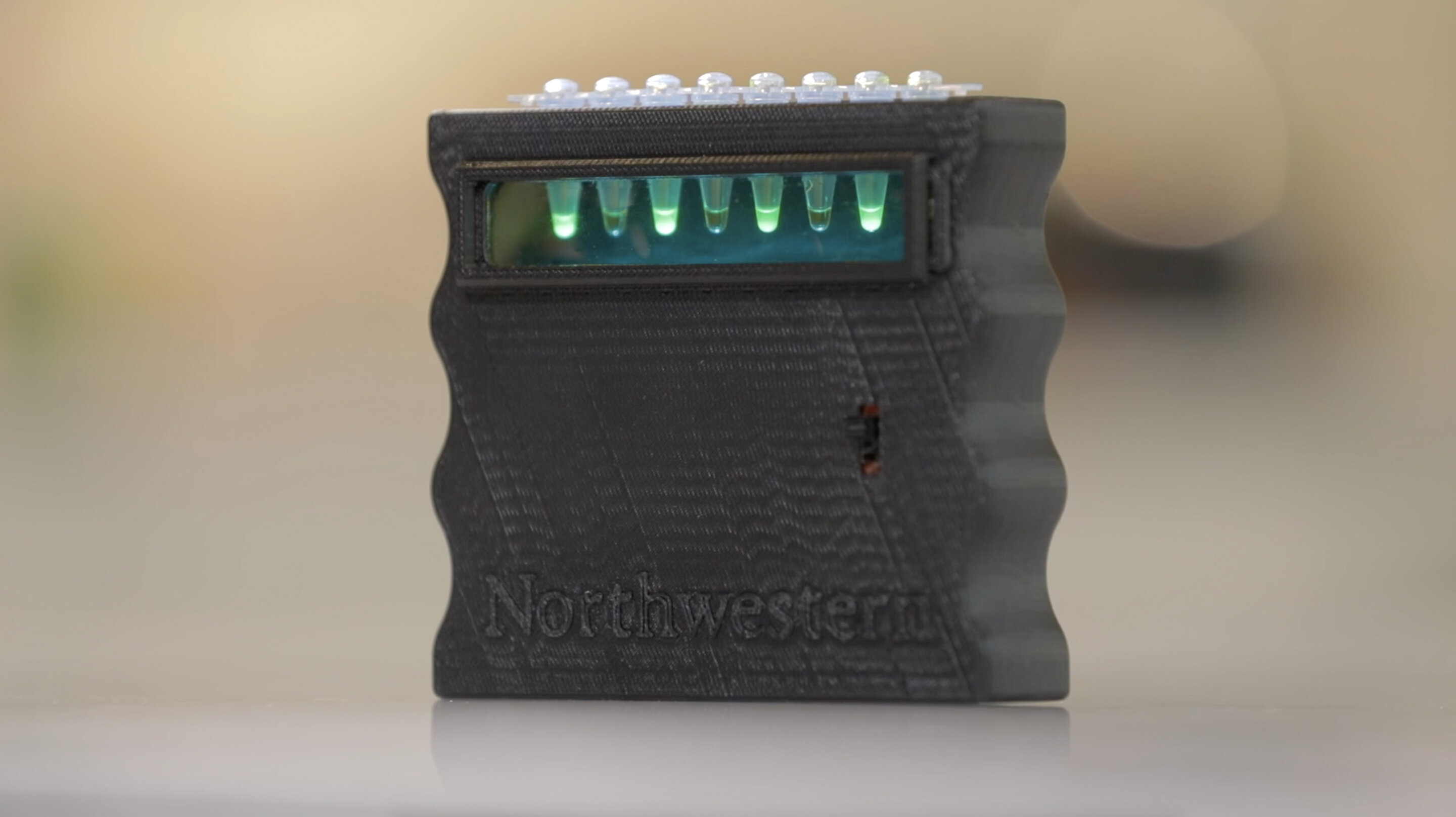New DNA computer assesses water quality
Date: 18.2.2022
Northwestern University synthetic biologists have developed a low-cost, easy-to-use, hand-held device that can let users know – within mere minutes – if their water is safe to drink.
 The new device works by using powerful and programmable genetic networks, which mimic electronic circuits, to perform a range of logic functions.
The new device works by using powerful and programmable genetic networks, which mimic electronic circuits, to perform a range of logic functions.
Among the DNA-based circuits, for example, the researchers engineered cell-free molecules into an analog-to-digital converter (ADC), a ubiquitous circuit type found in nearly all electronic devices. In the water-quality device, the ADC circuit processes an analog input (contaminants) and generates a digital output (a visual signal to inform the user).
Equipped with a series of eight small test tubes, the device glows green when it detects a contaminant. The number of tubes that glow depend upon how much contamination is present. If only one tube glows, then the water sample has a trace level of contamination. But if all eight tubes glow, then the water is severely contaminated. In other words, the higher concentration of contamination leads to a higher signal.
"We programmed each tube to have a different threshold for contaminations," said Northwestern's Julius B. Lucks, who led the research. "The tube with the lowest threshold will light up all the time. If all the tubes light up, then there is a big problem. Building circuits and programmable DNA computing opens up many possibilities for other types of smart diagnostics."























